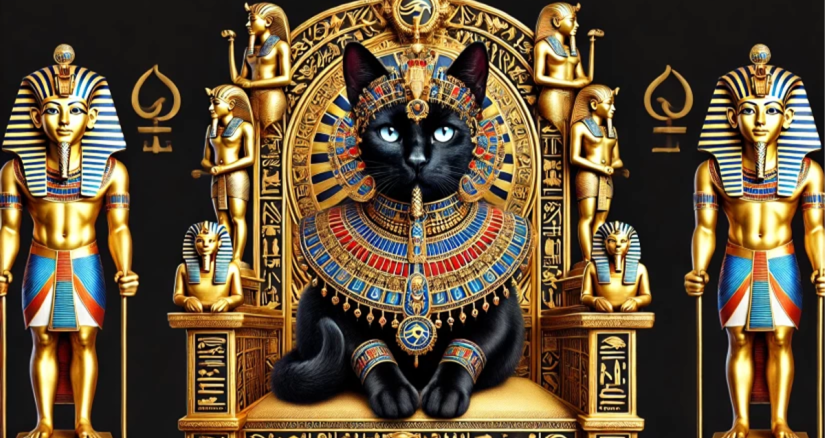
The Role of Cats in Ancient Egypt: From Gods to Mummies
Around 3500 B.C., the Nile River nurtured the rise of sophisticated civilization – ancient Egypt.1 It’s also where a remarkable partnership blossomed: the one between humans and African wildcats. These early felines, drawn to human settlements by their natural pest-control prowess, became the first domesticated cats.
The African wildcat had many admirable traits. They caught rodents and other pests that could have posed a significant threat to early farming societies like those in ancient Egypt. In the days when poisonous reptiles posed a serious threat, having a cat around was incredibly beneficial. Furthermore, historians believe ancient Egyptians fed their feline companions a diet rich in protein, with abundant Nile perch and desert birds, which likely formed the core of a cat's diet, providing essential amino acids for strong muscles and healthy growth. It is also believed that organ meats, such as offal from butchered animals might have been another source of vital nutrients.
Ancient Egyptian civilization flourished for millennia, and alongside its rise came a growing appreciation for felines. By the New Kingdom (1540 B.C.), cats held a revered position within both households and broader society. "Miu" was the ancient Egyptian word for "cat." It's a fascinating example of onomatopoeia, where the word itself imitates the sound a cat makes – a meow!2
In ancient Egypt, a pantheon of gods influenced daily life, and several deities held a strong association with cats. Bastet, a prominent goddess depicted as a woman with a cat's head, symbolized protection and good health. Her significance was such that killing a cat, even accidentally, resulted in severe punishment. Beyond their religious significance, cats were cherished companions in Egyptian households. Wealthier families indulged their felines with table scraps and even adorned them with gold jewelry. Egyptians deeply mourned the loss of their feline companions, often dedicating them to Bastet. Sekhmet, a lion-headed goddess representing war and Bastet's sister, further exemplifies the Egyptians' reverence for felines. These deities embodied the cat's duality – both graceful and fierce. Mafdet and Mut, lesser feline deities, reflected similar aspects of protection and fierceness.1,2
Ancient Egyptians believed their cats could be inhabited by deities, extending their reverence for these felines even beyond death. As Egyptians meticulously prepared for the afterlife, cat mummification became a common practice. The mummification process involved drying and carefully wrapping the cat's body in colorful cloths, often placed within a sculpted figure resembling a living animal. Thousands of discovered cat mummies serve as a testament to their revered position, and valued companions even in the afterlife. This practice highlights the unique place cats held in Egyptian culture, not just as revered pets but as potential vessels for the divine.
Even as pets now, and in the words of Terry Pratchett: “In ancient times cats were worshipped as gods; they have not forgotten this.”3
References
- Davies, A. 1991. The Significance of the Cat in Ancient Egypt. Self-published, Amanda Davies.
- Malek, J. 2006. The Cat in Ancient Egypt.1997th British Museum Press. pp.74-76
- Trumble, K. 1996. Cat Mummies. 1st, Harper Collins. pp.10-11
Follow us on LinkedIn for the latest updates on all things happening here at BSM Partners.
About the Author
Bill Bouldin is a Product Innovation Manager at BSM Partners. He has experience in product development and quality in pet and human food. Bill enjoys woodworking in his spare time.
This content is the property of BSM Partners. Reproduction or retransmission or repurposing of any portion of this content is expressly prohibited without the approval of BSM Partners and is governed by the terms and conditions explained here.